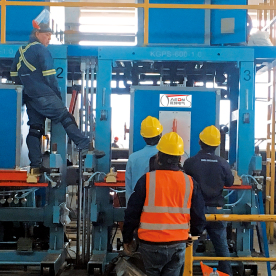In the ever-evolving landscape of electronics, the need for flexible and adaptable components has prompted innovations like the Variable Impedance Device (VID). These devices enable engineers to modify the impedance characteristics of their circuits dynamically, providing enhanced performance and versatility in a range of applications. In this article, we delve into what Variable Impedance Devices are, their underlying principles, and how they are revolutionizing electronic systems across various industries.
Understanding Variable Impedance Devices

Exploring the Role of Variable Impedance Devices in Modern Electronic Applications and Their Impact on Circuit Performance
At its core, a Variable Impedance Device can change its impedance value in response to external factors like voltage, current, or frequency. The term “impedance” refers to the opposition that a circuit presents to the flow of electrical current, encompassing both resistance and reactance. Traditionally, components with fixed impedance have dominated circuit design, but with the advent of Variable Impedance Devices, engineers can tailor their circuits more precisely.
Variable Impedance Devices can take various forms, including variable resistors (or rheostats), variable capacitors, and more advanced integrated circuits designed to act as tunable elements in a circuit. These devices facilitate a range of functionalities—from tuning radio frequencies in communication systems to modifying filter characteristics in audio applications.
Applications of Variable Impedance Devices
The applications of Variable Impedance Devices span numerous fields, including telecommunications, automotive systems, healthcare technology, and consumer electronics.
1. **Telecommunications**: In wireless communication systems, such as mobile phones and internet routers, the ability to adjust impedance dynamically allows for improved signal quality and reception. Variable Impedance Devices can compensate for changing environmental conditions, optimizing the performance of antennas and other critical components. This adaptability is essential for enhancing data transmission rates and maintaining efficient communication links.
2. **Audio Equipment**: Musicians and sound engineers rely heavily on high-quality audio outputs. Variable Impedance Devices are increasingly used in audio processing equipment, enabling the fine-tuning of filters, equalizers, and sound modulators. By dynamically adapting the impedance in audio circuits, these devices contribute to richer soundscapes and more precise audio reproduction.
3. **Medical Devices**: In healthcare technology, Variable Impedance Devices play a vital role in diagnostics and medical imaging. For example, impedance can significantly impact the performance of devices like electrocardiograms (ECGs) and impedance cardiography systems. Adjustable impedance helps enhance the clarity and accuracy of the data gathered, leading to better patient outcomes.
4. **Electric Vehicles**: The automotive industry is experiencing significant transformation with the shift toward electric vehicles (EVs). Variable Impedance Devices can be crucial in battery management systems, allowing for efficient energy transfer and optimization of battery performance. These devices help to manage the load requirements of electric drivetrains, improving the overall efficiency of EV systems.
The Principles Behind Variable Impedance Devices

Exploring the Role of Variable Impedance Devices in Modern Electronic Applications and Their Impact on Circuit Performance
The functionality of Variable Impedance Devices relies on various principles of electrical engineering and materials science.
– **Electronic Control**: Many modern Variable Impedance Devices operate electronically, allowing for rapid adjustments in real-time. This is facilitated through components such as Field-Effect Transistors (FETs) or operational amplifiers within circuit designs. These methods enable circuit designers to implement control algorithms that can dynamically adjust impedance based on real-time feedback.
– **Sensory Feedback**: In specific applications, Variable Impedance Devices might incorporate feedback mechanisms, allowing them to respond to changes in external conditions. For instance, in audio systems, real-time analysis of sound waves can be used to adjust impedance actively, optimizing sound quality based on the acoustics of the environment.

Exploring the Role of Variable Impedance Devices in Modern Electronic Applications and Their Impact on Circuit Performance
– **Smart Materials**: With the growth of smart materials technology, researchers are exploring integrating materials capable of responding to electric fields or thermal changes. These developments may lead to more sophisticated Variable Impedance Devices that can handle a wider range of applications.
Conclusion
As the complexity of electronic systems continues to increase, the importance of flexible components like Variable Impedance Devices becomes increasingly evident. Their ability to adapt to changing circumstances adds significant value across various industries. Through improving signal integrity in telecommunications, enhancing audio fidelity, and advancing healthcare technology, Variable Impedance Devices illustrate the potential of innovation in modern electronics. As research and development in this field progress, we can expect even more remarkable applications, paving the way for a future rich in technological advancements that prioritize efficiency, adaptability, and smart functionalities.Automatic induction heating equipment



